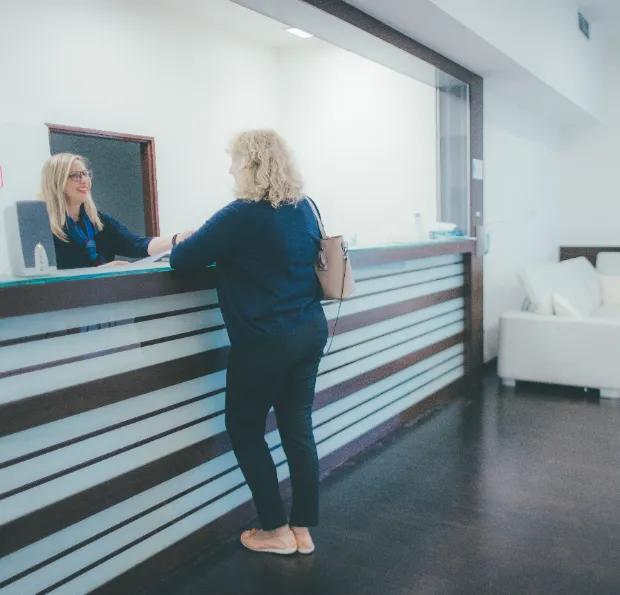Hernia clinic

A hernia occurs in areas of weakness in the abdominal wall, where the contents of the abdominal cavity protrude under the skin. The only effective treatment is its surgical removal. In the hernia consultation room, we perform comprehensive diagnostics and suggest the most appropriate type of procedure based on the size of the hernia, the patient's health condition and preferences. The standard is modern tension-free plastic surgery using fine and flexible mesh, which minimizes the risk of hernia recurrence and postoperative discomfort.
Hernia treatment options
Hernia surgery is one of the most common surgical procedures, and thanks to modern procedures, the procedure is now fast, gentle, and highly effective. The choice of a specific method is always based on the type of hernia, its size, and the patient's overall health.
Conservative Approach
Hernia belts (trusses) can temporarily relieve symptoms and slow the enlargement of a hernia, but they do not address the underlying defect. They are used only in patients who cannot undergo surgery.
Conventional Hernia Repair
The hernial defect (orifice) is closed by simply suturing the patient’s own tissue. This technique is suitable only for small hernias (up to 2 cm), because the increased tension at the suture line raises the risk of recurrence.
Tension-Free Hernia Repair
A modern method in which a mesh is used in addition to suturing. The mesh serves as reinforcement and prevents tension at the defect site. The result is less pain, a shorter healing period, and a minimal risk of the hernia returning.
Procedure progress
Modern hernia operations are routine procedures, but thanks to advanced technologies and materials, they significantly increase patient comfort. The procedure itself can be performed either classically open with an incision at the hernia site, or more gently laparoscopically under camera control. The surgeon always decides on the most appropriate method based on the type of hernia, its size, location and the patient's overall health.
The operation takes approximately 30 to 60 minutes. It is most often performed under general anesthesia, but in some cases it is also possible to perform the procedure under local anesthesia. After the procedure, the patient is usually discharged home the same day or the next day. It is recommended to avoid heavy physical exertion for the first few days. Full load, including sports, is then usually possible after 10 to 14 days.
Advantages of modern hernia surgery
Thanks to the use of tension-free plastic surgery and the most modern types of mesh, today's operations bring a number of benefits:
- very low risk of hernia recurrence (recurrence only approx. 3%)
- faster healing and return to normal life
- minimal pain after the procedure
- short or no hospitalization
- The mesh is gentle, lightweight and anatomically shaped.
Risks and possible complications
As with any surgical procedure, complications can occur, such as bleeding, wound infection, or allergic reactions to the materials used. However, thanks to modern approaches, these risks are minimal.
During 25.8. - 30.9.
is CLOSED due to maintanance
